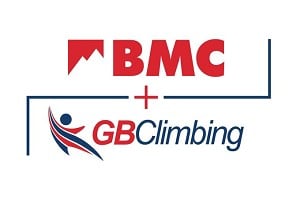
A lot has been going on behind the scenes at the BMC over the past week, with rumours of redundancies and financial issues — including a projected 2023 deficit of £275,000 if suggested 'course corrections' are not taken. One member of the access team has already gone, with another to follow, and there'll be more throughout the coming weeks, although exactly how many - and throughout which departments - is yet to be confirmed. Given the size of these changes it's surprising that there hasn't - until last night - been a statement from management explaining them. The statement that was then made seems unapologetic and tone deaf. In this article we have included a copy of that statement, alongside an analysis of what we know thus far, where things may have gone wrong, and what the future may hold for the BMC.
But first, let's be completely clear about UKC/UKH's stance. We believe that climbers, hillwalkers and mountaineers need a functioning and effective representative body. Access, conservation and the environment are more important than ever. Since the pandemic there's been ever greater strain on outdoor spaces and without the BMC access team the outdoor-going public in England and Wales would be in a much worse position than they currently are. When it comes to indoor climbing, the organisation needs to maintain a profile within this sphere, in order to foster connections with new climbers coming into the sport, to educate that audience on etiquette and best practise outdoors, and to represent competition climbers via GB Climbing.
BMC Statement:
"Due to the slower than forecast rate of growth of our membership, and as a result of other income being suppressed as we emerge from the pandemic and current external environment, we are reviewing our operational and base costs in order to maintain a sustainable BMC for the future. We have initiated a small restructure process which will ensure that we have the right structure, financially and operationally, to deliver our priorities across all areas moving forward over the coming years.
"It's important to note that our membership is still growing, but growth is not at the rate that we had projected. We are in the same position as a lot of other similar organisations who have not yet achieved a full bounce back from the impacts Covid amidst the current climate. Our operational budget will need to reflect the income we receive and we need to ensure we have the right staff base moving forwards across all our areas of work, with income for the remainder of the year set to be below forecast we will make proportionate reductions where we can across all areas of the BMC. All departments will be affected, including ACES (Access, Conservation & Environmental Sustainability) as the team has grown faster than income can support, however our commitment to the work ACES delivers remains as strong as ever and we guarantee retaining a higher level of resource than in recent years. We will continue developing our work and support for outdoor and indoor climbers, and raising awareness of our important work within the hill walking community, which we recognise as vital to the future of the BMC.
"Although this process causes uncertainty for everyone involved, we hope there will be a minimal reduction in the number of permanent staff and will be providing all necessary support to those affected. Our staff, volunteers and members are our main concern and we are doing everything in our power to minimise the impact of this decision on our employees, and by extension, on our members and stakeholders. We do not expect this to impact our day-to-delivery and aim to work through the process as swiftly as possible. We want to emphasise that our strategic aims remain unchanged and there is no divergence from them."
There's no denying that the last few years have been tough, for the organisation, its staff, and its members alike. The BMC's Statement of Income and Retained Earnings, which is publicly available on Companies House, shows a deficit of £105,295 in 2021, which had more than doubled to £267,754 by the year-end in 2022. The pandemic undoubtedly had a huge impact, with membership numbers dropping significantly both for the BMC and other organisations, including the National Trust, RSPB and Wildlife Trusts. After the pandemic, membership numbers started to rebound, but they may have been tempered by recent inflation, coupled with the cost of living crisis. This has presented issues both in terms of the membership, who may or may not be able to justify the cost, and to the organisation itself, for which day-to-day running costs have also increased.
Given the landscape described above it's surprising that the BMC has set itself such ambitious membership targets for the year ahead, and unsurprising that they've failed to reach them.
To understand why this is it's worth breaking down their previous years growth and putting their targets into context. Between 2011-2017 the BMC had a period of consistent growth, with an average increase of 1500+ members each year, and a particularly good year in 2015, where they gained 2800+ members. In 2018-2019 growth slowed, with an average of 450+ new members each year, although this was around the time of the motion of no confidence/organisational review, a period that did not cast the BMC in a kind light. Vast amounts of staff time were taken up dealing with this, and to many the process detracted from the good work that the BMC did. The pandemic years of 2020-2021 represent a very definite low with a loss of 7000+ members. These are the highs and lows, but what is conspicuous by its absence is any stratospheric high or anomaly - exactly the thing that is required to meet the forecast growth.
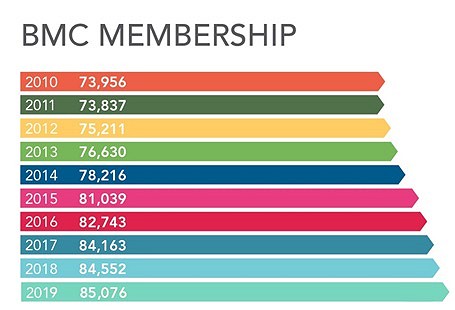
By the end of 2023 the BMC had hoped to reach a total of 91,000 members, which would have represented an annual increase of nearly 8,000 - something they have never got close to achieving. They then hoped to increase that figure to 100,000 by the end of 2024. Given the steady but modest rate of growth from previous years it's hard to see how these colossal gains are supposed to be made. In the absence of cost cutting these gains needed to be made though, with several years of overspend, and a projected deficit that an increased return in membership fees would have gone a long way towards offsetting. The target audience for these gains was amongst hillwalkers and indoor climbers - two potentially very different user groups that would have to be attracted at the same time.
Hillwalkers have long been a target for the BMC and there have been concerted efforts to recruit them over the years, dating back to Carey Davies's employment as the organisation's first Hillwalking Officer in 2013 and the launch of Mend Our Mountains in 2016. Though progress was undoubtedly made, the gains were not as significant as had been hoped, with hillwalkers seemingly being quite hard to attract. Indoor climbers have presented a similar challenge, though perhaps for different reasons. Whilst the BMC has a lot to offer people who venture outside, it has very little in comparison to offer to those who don't.

It seems churlish to criticise the BMC for setting itself an ambitious target and having a vision about where it wants to be, but in the current circumstances it's clear that the projected membership growth figures were wildly unrealistic.
Some have speculated that this growth target was made in an effort to impress Sport England, latterly an important source of funding for the BMC's work around competition climbing. This explanation would certainly fit with the experience and expertise of the current management team, who have all been drafted in from other National Governing Bodies, including British Cycling, England Netball, Table Tennis England and British Wheelchair Basketball. A management team with backgrounds in more professionalised sporting bodies is not necessarily a bad thing, and has the potential to do the BMC some good. But setting an unrealistic target and failing to spot this early enough to avoid job losses is reflective of poor decision making. It suggests an inadequate appreciation of how to appeal to hillwalkers and indoor climbers, two disparate user groups with few key interests in common.
Many have asked why the access team is the first part of the organisation to be hit with redundancies, when it's such a core element of what the BMC do. Wednesday's statement points to the fact that the access team, even after the redundancies, is larger than it's ever been. Whilst this is true, given that access and conservation are cited as the main reasons for members joining, perhaps its increased size should not come as a surprise.
It has long been said that the BMC undervalues the importance of access and conservation work - particularly in terms of how it is marketed (or not, as the case may be). The organisation has the potential to become more aspirational and visionary, much like the American Access Fund, but instead seems to focus its efforts on marketing insurance to its members. People get as excited about insurance as they do paying gas and electricity bills, and within an extremely competitive market it's not an easy sell. Access, conservation and the environment on the other hand have the potential to be much more inspiring.

Losses within marketing and communications are also expected, which will further compound the problems of making membership aware of what's going on (and there is a lot going on). Using the current situation as a case study, the initial absence of information was painfully apparent, then when a statement was eventually made it was made in a tone deaf, unapologetic manner, using what many members have described as 'management speak'. This adds further weight to the sense of disconnect between management and membership - something that will be harder for a reduced marketing and communications team to restore.
Access is funded almost entirely by BMC membership fees, but when it comes to indoor and competition climbing, the picture becomes less straightforward thanks to a complex funding structure. This is a significant part of the reason why access has been hard hit, whereas indoor climbing/competition climbing, in comparison, hasn't. GB Climbing is an internal business unit of the BMC, which manages performance/talent pathways and competition climbing in England and Wales. Unlike access, it receives funding from multiple sources, with some staff being paid exclusively by the BMC whilst others are jointly funded by the BMC and UK Sport (BMC: 15% / UK Sport: 85%). The UK Sport website states that Sport Climbing - represented by the BMC through GB Climbing - received 'Progression' funding of £1,562,813 to support the Paris 2024 Olympic cycle (2021-2025).
The amount of money provided to GB Climbing by the BMC was previously included within their 2021 annual review, but this figure was omitted in their last report. The overall expenditure has risen from 889K to 960K between 2021 and 2022, but it is not clear how much of this money came directly from the BMC.
This dichotomy in focus and funding perfectly highlights how the organisation appears to be getting pulled in two very different directions, with the 'representative body' and access on the one side, and the 'governing body' and competition climbing on the other. Without the stats it's hard to be definitive, but the impression of most observers is that competition climbing has been favoured over other considerations. In staff alone, the GB Climbing team has increased significantly in recent years, although the way in which these roles are funded makes direct comparison and analysis difficult. Once again, it seems that openness and transparency are a problem.
Given the performance sport background of BMC CEO Paul Davies, the weight of interest swaying towards performance may not come as a complete surprise. Emphasis on competition climbing reflects a trend more generally in which elite sport is promoted and funded at the expense of the grass roots. But chasing this stream of funding, and medal glory, may have proved a distraction from the bread-and-butter work of an organisation whose membership values far more highly the important and unglamorous lobbying, environmental and access work that BMC staff carry out.
It is inevitable - and desirable - that the BMC retains a strong interest and influence in indoor climbing. This is where most new climbers are now entering the sport, and if they can be reached at the wall then good practice and outdoor etiquette might be instilled in new climbers early, thus making the job of maintaining access to crags and hills easier as people transition to the outdoors. The question is: why would people who have started climbing indoors want to join the BMC, when the benefits it offers are of most interest to individuals who go outdoors?
In Germany, the DAV did things a little differently, and back when climbing walls were taking off they made the bold decision to build some cutting edge facilities of their own. As a result they became very much an integral part of this new, emerging audience. The DAV has an eye watering membership of 1.3 million.
It is important that we acknowledge the fantastic work that the BMC and its staff do. Whilst we are aware that events such as this don't make membership any more appealing, the work that they do is invaluable. As such, we would implore anyone reading this not to cancel their membership. While nobody wants another BMC witch hunt, searching questions do need to be asked. Let's just hope that those questions can be kept constructive.

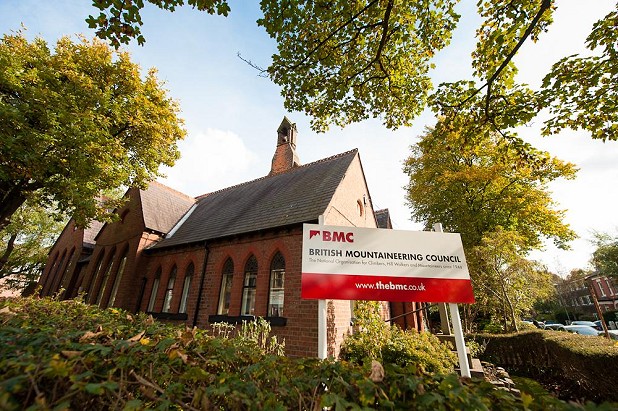
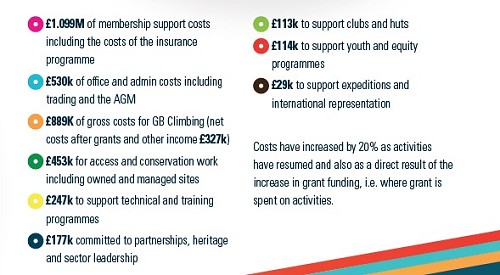
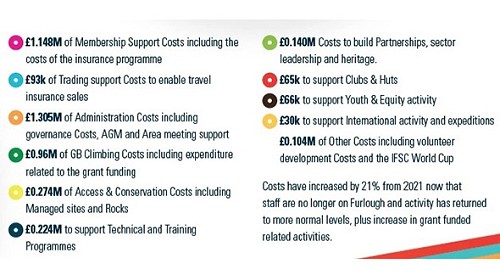
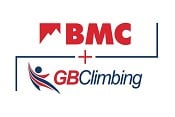
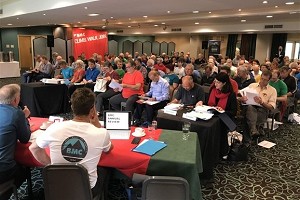
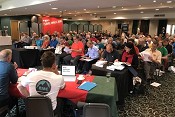






Comments
Interesting article. These niche governing bodies always seem to be in the throes of upheaval - the Fell Runners Association has had its challenges, as have others. I wonder if there's an opportunity to band together bodies with aligned interests and have a louder collective voice.
Also, I didn't know what the BCM membership fees are so went on the website to look (£33/year for me). On the membership page, the 'benefits' of this membership are basically insurance, discounts I won't use and a magazine. There's nothing on there about the benefits I'd be interested in, which would be about securing access, protecting the environment or volunteering my time. They've lost my attention already.
What a great article! So good it's dragged maybe my first ever UKC forum-post out of my fingers... I feel like writing, "I told you so". It seemed clear to me back in 2018 (when the toys well and truly fell out of the pram over the motion of no confidence, the subsequent restructuring, and the dramatic re-write of the Articles) that the focus was shifting far too far away from what the BMC had been conceived for by it's founding members (clubs) and had settled on the monied topics of competition climbing (through Sport UK funding) and insurance (sales). At the time the glory of climbing's debut in the forthcoming Olympic was just too much for too many vested interests to see past.
Part of that re-write of the Articles took the direction and authority of where the BMC was going away from the members and gifted it to the board. There is no doubt in my mind that, if asked again, members would not allow access and conservation to be a casualty of the BMC's agenda! Accountability to members, and governance driven by the members has been lost.
In my view something radical needs to be done to rebalance the very raison d'être of having the BMC. With a weakened (or even just not the most significant part of the BMC) access and conservation focus there is no point in the BMC for most climbers. I could easily argue that for most climbers the BMC is already invisible. Consider this - if the BMC vanished in a puff of smoke right now, what difference would currently active climbers notice?
In general, a very balanced article but (there's always a but, sorry!) re the money:
The number in bold is incorrect, you have been fooled by the fact the BMC (very frustratingly) change colours for activities between Annual Reports. it should be 0.96M. Your appear to have employed the same proof reader as the BMC did for their statement!
I am also baffled by what is not "clear" where the funding came from. After Simon's post this morning I took 10 minutes to look at the annual reports for the last three years. It seemed pretty simple:
https://www.ukclimbing.com/forums/rock_talk/how_much_is_gb_climbing_really_costing_the_bmc-761785?v=1#x9802177
Have I missed something?
Very informative and fair article UKC - thanks. I really hope the BMC read this and take stock.
The aspect related to competition climbing needs to separate from the core values of access and conservation. I certainly won't rejoin until they get their house in order (which they seem to be knocking down at present).